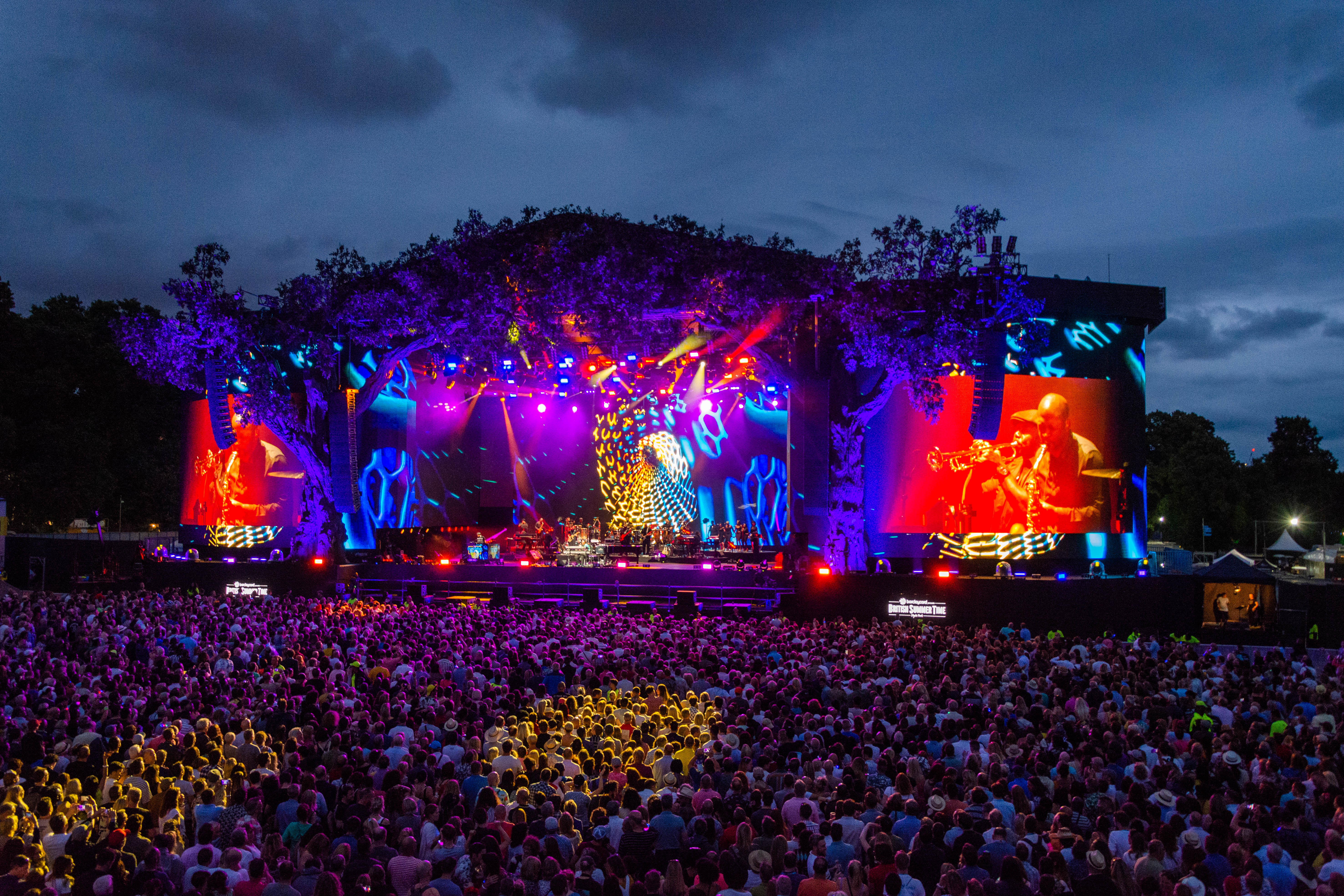Headliner heads down to London’s Hyde Park for the weekend to meet BST’s audio system engineer, who explains why Martin Audio’s MLA is crucial to the smooth running of the sold-out music festival, what goes into working with Stevie Wonder, and how he navigates every sound engineer’s worst case live scenario.
“I studied chemistry at university,” shouts Toby Donovan, audio system engineer at British Summer Time Hyde Park. What he is shouting over, is the consistently spectacular live tones of singer-songwriter Lianne La Havas, who is flawlessly belting out her soulful hits to approximately 65,000 sun-soaked (and happily sozzled) music-lovers in London’s Hyde Park.
Headliner is snapped out of the hypnotic state caused by La Havas’ blissed-out vocals during her cover of I Say a Little Prayer (or possibly is still recovering from experiencing the sheer sonic power and associated G&Ts of Celine Dion the evening before) to meet Donovan, who has managed to take a few minutes out of a very hectic working weekend to shed some light on the technical requirements that go into a large, outdoor event like BST.
“While I was at university I was also working for a local PA company, and I’ve played guitar and been in bands for a long time. I was mixing bands for small, and then larger companies, and eventually this just developed into working for bigger companies and going on tours. This really wasn’t something I studied, it was more a case of doing what I enjoyed. I'm a musician; I started small and you get to know people and work your way up,” he yells - as politely as one can.
Bellowing has become intrinsically linked to the BST event, which is celebrating its seventh successful year at its Hyde Park site: in the past, controlling the volume levels for the park’s affluent neighbours proved a big challenge.
Historically, Hyde Park concerts have struggled with off-site noise pollution, leading to neighbourhood complaints and the need to reduce sound levels on site - meaning that the audience couldn’t hear the performances they had paid good money to see, which this year include headliners Celine Dion, Barbra Streisand, Robbie Williams, Florence + The Machine and The National - and tonight, Lionel Richie and Stevie Wonder.
“The biggest challenge of Hyde Park is the offside noise issue,” Donovan confirms. “Park Lane is right next to the park, as are a lot of very nice hotels and very expensive houses. This event is something that some people don't necessarily want on their doorstep, but having a big London park - they want to put on events for the public.”
And the public indeed came in picnic blanket-armed droves, with each date reportedly completely selling out. Headliner can attest to its popularity: if you live in the UK, you know someone that went to one of these gigs, and oh didn’t they have to let everyone know just how much fun they were having? Oh wait, that was us.


